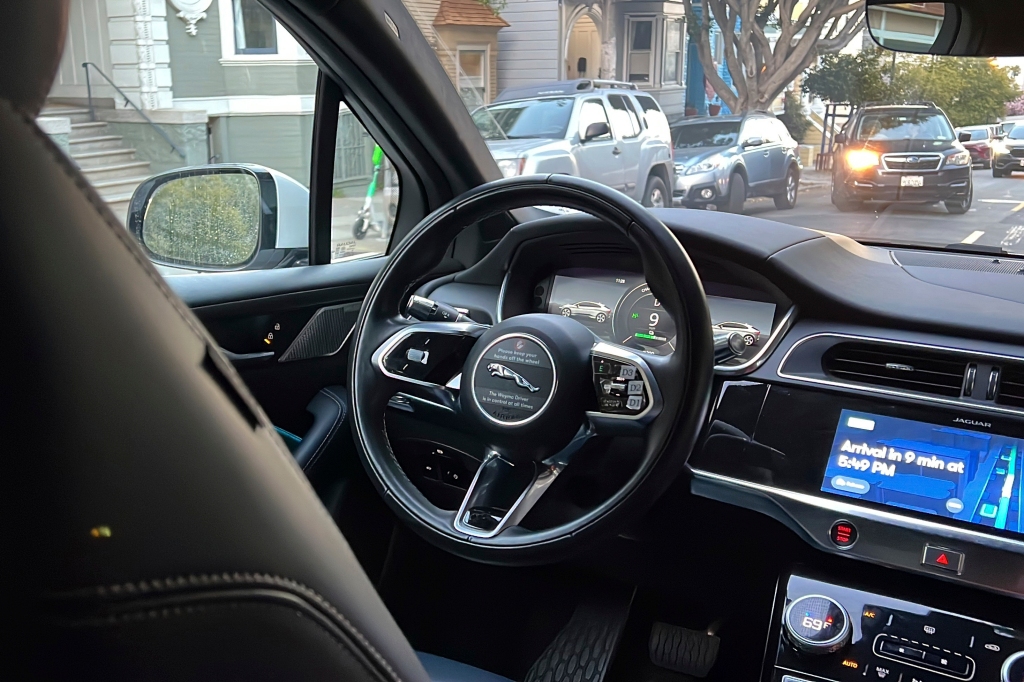Self-driving Google robotaxi hit and killed a dog
A self-driving Google car ran over and killed a small dog during a test drive in San Francisco — adding to local officials’ fears over a massive planned rollout of the ride-sharing robotaxis.
An online DMV report said the car by Waymo — previously the Google Self-Driving Car Project — hit a small dog “which did not survive.”
“A test driver was present” in the driver’s seat, but the vehicle’s automatic driving system (ADS) “was engaged in autonomous mode” during the deadly accident on May 21, the report states.
The autonomous vehicle also “sustained damage” in the crash, the DMV report noted, with a box ticked to show it was minor.
A spokesperson for Waymo, a subsidiary of Google parent company Alphabet Inc., confirmed the crash to The San Francisco Standard, which first reported it.
“The investigation is ongoing, however, the initial review confirmed that the system correctly identified the dog, which ran out from behind a parked vehicle, but was not able to avoid contact,” the spokesperson said.
“The trust and safety of the communities we are in is the most important thing to us, and we’re continuing to look into this on our end,” the rep said.
The company sent its condolences to the owner of the dead dog, who was not identified.
The accident came amid escalating concerns that the California Public Utilities Commission appears set to approve self-driving robotaxis to operate 24 hours a day across San Fran, the paper said.

The heads of city planning and transport wrote letters condemning the “virtually unlimited expansion” of “a developmental technology that is not yet ready for unconstrained commercial deployment.”
They sent two letters, one opposing Waymo and another for its rival, Cruise, which is operated by General Motors.
Reported incidents involving the vehicles more than tripled from 24 in January to 93 in March, according to the paper, citing city data. There were 87 reports in April, the last month listed.
In January, a driverless Cruise car drove through police tape as firefighters tried to extinguish a major house fire — with a smoke eater having to smash the windshield to finally stop it, the paper noted.
That same month, a Waymo car entered an active construction site — stopping at the edge of an open trench with workers inside it, according to the San Francisco Chronicle.
Cars have also blocked buses, and one narrowly avoided an accident with a light rail car after coming to a stop on the tracks, the reports said.
The reported cases are “almost certainly a small minority of the total number of incidents actually occurring,” according to the local officials’ letters of complaint.
“Cruise and Waymo seem focused on avoiding injury collisions directly but do not seem concerned about the intensity of the chaos that they’re creating around them,” Municipal Transportation Agency Director of Transportation Jeffrey Tumlin told the Standard this week.
“It appears that a Cruise vehicle is 6.3 times more dangerous than a human driver at this stage,” he said.
The self-driving cars “have not yet met the minimum requirements that a human driver would face for an actual driver’s license,” he stressed.
“We’re eager to partner with them to help them advance their technology to the point where they are exceeding the safety record of human drivers.
“They are, however, a long way away from achieving that goal.”
A Waymo rep told the Chronicle that such concerns “are a standard part of the regulatory process.”
“We have long appreciated a healthy dialogue with city officials and government agencies in California,” the spokesperson said. “We look forward to the continued partnership with public stakeholders.”
Drew Pusateri, a spokesperson for Cruise, said it has “received overwhelmingly supportive comments as we have sought to expand our service.”
“We’re proud of our safety record, which is publicly reported and includes millions of miles driven in an extremely complex urban environment,” he said.
Read the full article Here


